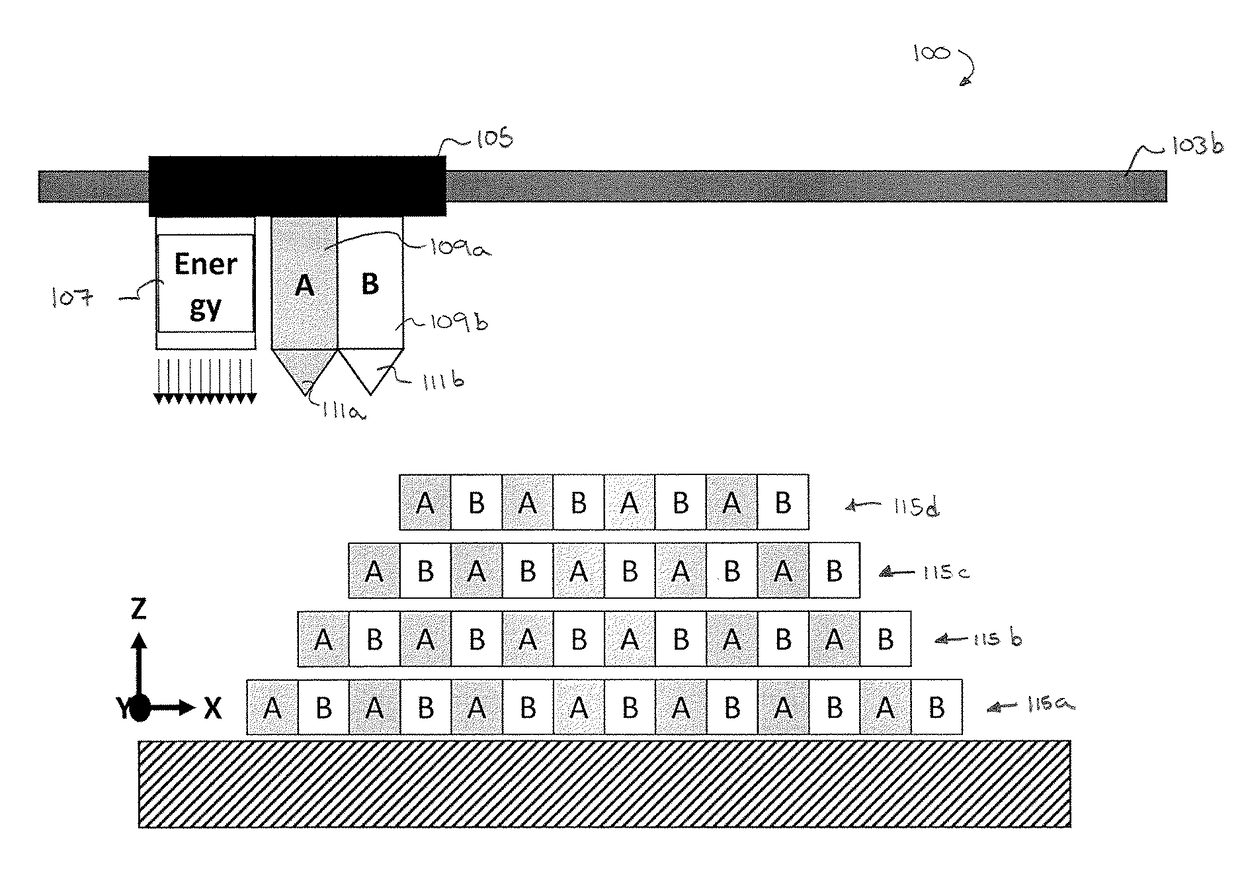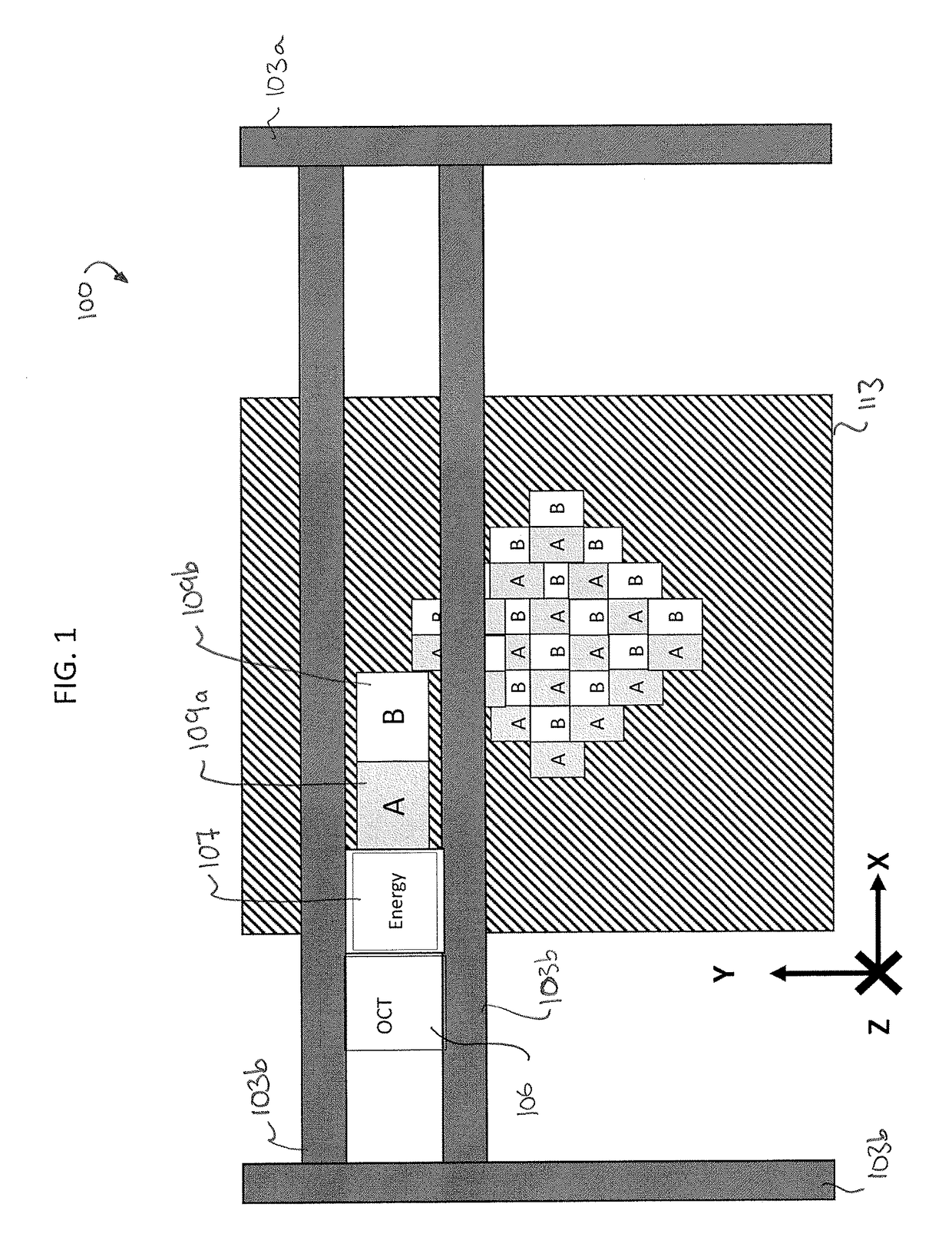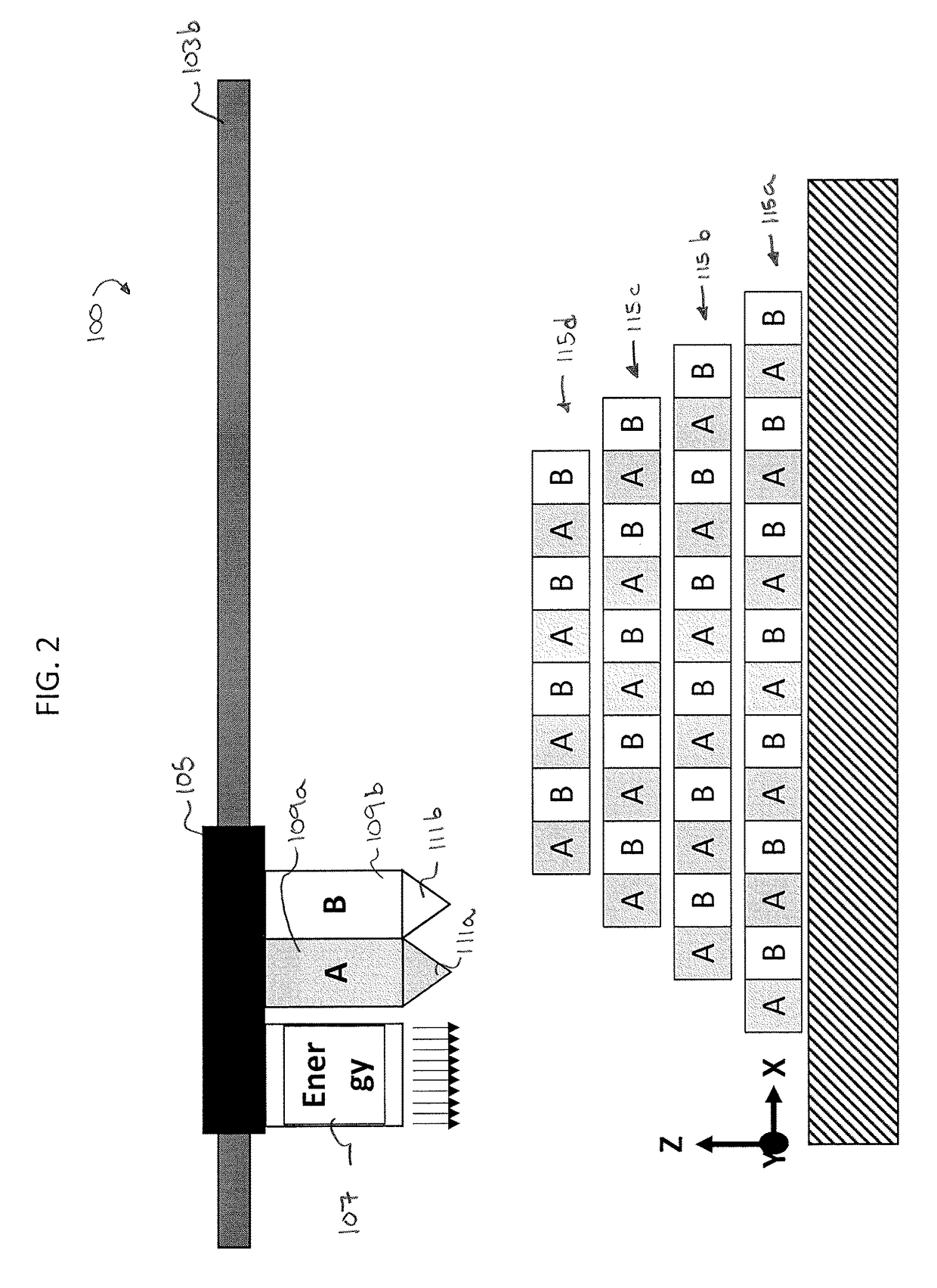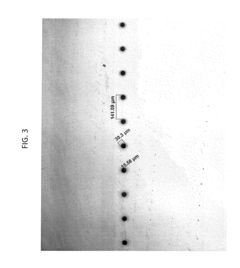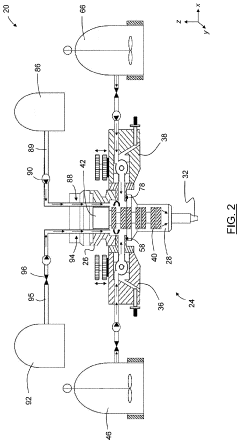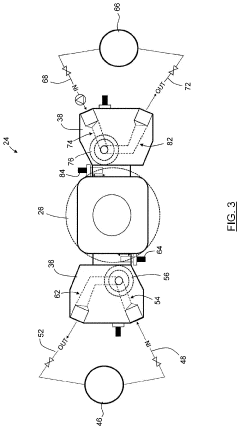Polyurethane Role in 3D Printing: Current Innovations
JUN 25, 20259 MIN READ
Generate Your Research Report Instantly with AI Agent
Patsnap Eureka helps you evaluate technical feasibility & market potential.
PU in 3D Printing: Background and Objectives
Polyurethane (PU) has emerged as a significant material in the rapidly evolving field of 3D printing, offering unique properties that enhance the capabilities of additive manufacturing. The journey of PU in 3D printing began in the early 2010s when researchers started exploring its potential as a printable material. Since then, the technology has progressed significantly, driven by the increasing demand for flexible, durable, and customizable 3D-printed products.
The evolution of PU in 3D printing has been marked by several key developments. Initially, the focus was on developing PU formulations suitable for various 3D printing techniques, such as fused deposition modeling (FDM) and stereolithography (SLA). As the technology matured, researchers and industry players shifted their attention to improving the mechanical properties, print resolution, and post-processing techniques of PU-based 3D printed objects.
One of the primary drivers behind the adoption of PU in 3D printing has been its versatility. PU offers a wide range of properties, from soft and flexible to rigid and tough, making it suitable for diverse applications across industries. This adaptability has led to its use in sectors such as automotive, aerospace, healthcare, and consumer goods, where customized, complex geometries and specific material properties are often required.
The current technological landscape of PU in 3D printing is characterized by ongoing innovations in material formulations, printing processes, and post-processing techniques. Researchers are exploring ways to enhance the printability of PU, improve its mechanical properties, and expand its application range. This includes the development of PU-based composites, the integration of smart materials, and the optimization of printing parameters for better performance and quality.
Looking ahead, the objectives for PU in 3D printing are multifaceted. There is a strong focus on developing sustainable and bio-based PU formulations to address environmental concerns. Additionally, efforts are being made to improve the scalability of PU 3D printing for industrial applications, enhance the material's resistance to environmental factors, and expand its use in functional and smart materials.
Another key objective is to overcome current limitations, such as the relatively slow printing speeds and the need for specialized equipment for certain PU formulations. Researchers are also working on improving the surface finish and dimensional accuracy of PU-printed parts, as well as developing new post-processing techniques to enhance the final product quality.
As the field continues to evolve, the integration of PU in 3D printing is expected to play a crucial role in advancing additive manufacturing technologies. The ongoing research and development in this area aim to unlock new possibilities in product design, manufacturing processes, and material science, potentially revolutionizing various industries and opening up new avenues for innovation and customization.
The evolution of PU in 3D printing has been marked by several key developments. Initially, the focus was on developing PU formulations suitable for various 3D printing techniques, such as fused deposition modeling (FDM) and stereolithography (SLA). As the technology matured, researchers and industry players shifted their attention to improving the mechanical properties, print resolution, and post-processing techniques of PU-based 3D printed objects.
One of the primary drivers behind the adoption of PU in 3D printing has been its versatility. PU offers a wide range of properties, from soft and flexible to rigid and tough, making it suitable for diverse applications across industries. This adaptability has led to its use in sectors such as automotive, aerospace, healthcare, and consumer goods, where customized, complex geometries and specific material properties are often required.
The current technological landscape of PU in 3D printing is characterized by ongoing innovations in material formulations, printing processes, and post-processing techniques. Researchers are exploring ways to enhance the printability of PU, improve its mechanical properties, and expand its application range. This includes the development of PU-based composites, the integration of smart materials, and the optimization of printing parameters for better performance and quality.
Looking ahead, the objectives for PU in 3D printing are multifaceted. There is a strong focus on developing sustainable and bio-based PU formulations to address environmental concerns. Additionally, efforts are being made to improve the scalability of PU 3D printing for industrial applications, enhance the material's resistance to environmental factors, and expand its use in functional and smart materials.
Another key objective is to overcome current limitations, such as the relatively slow printing speeds and the need for specialized equipment for certain PU formulations. Researchers are also working on improving the surface finish and dimensional accuracy of PU-printed parts, as well as developing new post-processing techniques to enhance the final product quality.
As the field continues to evolve, the integration of PU in 3D printing is expected to play a crucial role in advancing additive manufacturing technologies. The ongoing research and development in this area aim to unlock new possibilities in product design, manufacturing processes, and material science, potentially revolutionizing various industries and opening up new avenues for innovation and customization.
Market Analysis for PU-based 3D Printing Materials
The market for polyurethane-based 3D printing materials has experienced significant growth in recent years, driven by the increasing adoption of additive manufacturing technologies across various industries. The versatility and unique properties of polyurethane make it an attractive material for 3D printing applications, particularly in sectors such as automotive, aerospace, healthcare, and consumer goods.
The global market for PU-based 3D printing materials is expected to continue its upward trajectory, with a compound annual growth rate (CAGR) projected to exceed that of the overall 3D printing materials market. This growth is attributed to the expanding range of applications for polyurethane in 3D printing, including prototyping, end-use parts production, and specialized components for demanding environments.
One of the key drivers of market demand is the automotive industry, where PU-based materials are increasingly used for producing lightweight, durable parts with complex geometries. The aerospace sector is another significant contributor to market growth, utilizing PU-based materials for interior components, seals, and gaskets that require specific mechanical and chemical properties.
In the healthcare industry, the biocompatibility and flexibility of certain polyurethane formulations have led to their adoption in medical device manufacturing and personalized healthcare solutions. This includes applications such as prosthetics, orthotics, and patient-specific implants, which benefit from the customization capabilities of 3D printing combined with the material properties of polyurethane.
The consumer goods sector has also shown increasing interest in PU-based 3D printing materials, particularly for producing footwear components, sports equipment, and customized consumer products. The ability to create parts with varying degrees of flexibility, durability, and shock absorption has opened up new possibilities for product design and performance enhancement.
Geographically, North America and Europe currently lead the market for PU-based 3D printing materials, owing to their advanced manufacturing sectors and high adoption rates of additive manufacturing technologies. However, the Asia-Pacific region is expected to witness the fastest growth in the coming years, driven by rapid industrialization, increasing investments in advanced manufacturing technologies, and growing demand from emerging economies such as China and India.
Despite the positive outlook, challenges remain in the widespread adoption of PU-based 3D printing materials. These include the need for improved material formulations to enhance printability and post-processing requirements, as well as the development of more efficient printing processes to reduce production costs and increase throughput. Additionally, efforts to improve the sustainability and recyclability of PU-based materials are becoming increasingly important as environmental concerns gain prominence in the manufacturing sector.
The global market for PU-based 3D printing materials is expected to continue its upward trajectory, with a compound annual growth rate (CAGR) projected to exceed that of the overall 3D printing materials market. This growth is attributed to the expanding range of applications for polyurethane in 3D printing, including prototyping, end-use parts production, and specialized components for demanding environments.
One of the key drivers of market demand is the automotive industry, where PU-based materials are increasingly used for producing lightweight, durable parts with complex geometries. The aerospace sector is another significant contributor to market growth, utilizing PU-based materials for interior components, seals, and gaskets that require specific mechanical and chemical properties.
In the healthcare industry, the biocompatibility and flexibility of certain polyurethane formulations have led to their adoption in medical device manufacturing and personalized healthcare solutions. This includes applications such as prosthetics, orthotics, and patient-specific implants, which benefit from the customization capabilities of 3D printing combined with the material properties of polyurethane.
The consumer goods sector has also shown increasing interest in PU-based 3D printing materials, particularly for producing footwear components, sports equipment, and customized consumer products. The ability to create parts with varying degrees of flexibility, durability, and shock absorption has opened up new possibilities for product design and performance enhancement.
Geographically, North America and Europe currently lead the market for PU-based 3D printing materials, owing to their advanced manufacturing sectors and high adoption rates of additive manufacturing technologies. However, the Asia-Pacific region is expected to witness the fastest growth in the coming years, driven by rapid industrialization, increasing investments in advanced manufacturing technologies, and growing demand from emerging economies such as China and India.
Despite the positive outlook, challenges remain in the widespread adoption of PU-based 3D printing materials. These include the need for improved material formulations to enhance printability and post-processing requirements, as well as the development of more efficient printing processes to reduce production costs and increase throughput. Additionally, efforts to improve the sustainability and recyclability of PU-based materials are becoming increasingly important as environmental concerns gain prominence in the manufacturing sector.
Current State and Challenges of PU in Additive Manufacturing
Polyurethane (PU) has emerged as a promising material in the field of additive manufacturing, offering unique properties that complement traditional 3D printing materials. However, its current state in the industry is characterized by both significant advancements and persistent challenges.
The versatility of polyurethane has led to its adoption in various 3D printing applications, particularly in the production of flexible and durable parts. Its ability to be formulated with a wide range of mechanical properties, from soft elastomers to rigid plastics, has made it attractive for industries such as automotive, aerospace, and medical device manufacturing. Recent innovations have focused on improving the printability and performance of PU materials, resulting in enhanced resolution, surface finish, and mechanical strength of printed parts.
Despite these advancements, several challenges continue to hinder the widespread adoption of polyurethane in additive manufacturing. One of the primary obstacles is the complexity of PU chemistry, which can lead to inconsistent print quality and material properties. The reactivity of PU precursors often requires careful control of environmental conditions during printing, such as temperature and humidity, to ensure optimal curing and layer adhesion.
Another significant challenge is the limited availability of specialized PU formulations optimized for specific 3D printing technologies. While some progress has been made in developing PU materials for stereolithography (SLA) and digital light processing (DLP), there is still a need for more diverse and tailored solutions across different printing platforms, including fused deposition modeling (FDM) and selective laser sintering (SLS).
The post-processing requirements of PU-printed parts also present challenges. Many PU materials require extensive post-curing to achieve their final mechanical properties, which can be time-consuming and energy-intensive. Additionally, the surface finish of PU parts often requires further treatment to meet industry standards, adding complexity to the manufacturing process.
From a geographical perspective, the development and adoption of PU in 3D printing have been concentrated in regions with strong polymer and additive manufacturing industries, such as North America, Western Europe, and parts of Asia. However, the distribution of expertise and resources remains uneven, with some regions lagging in research and implementation.
Looking ahead, overcoming these challenges will require concerted efforts in materials science, process optimization, and machine design. Researchers and industry players are actively working on developing new PU formulations with improved printability, faster curing times, and enhanced mechanical properties. Additionally, advancements in printer hardware and software are being pursued to better accommodate the unique characteristics of polyurethane materials, potentially expanding their applications in additive manufacturing.
The versatility of polyurethane has led to its adoption in various 3D printing applications, particularly in the production of flexible and durable parts. Its ability to be formulated with a wide range of mechanical properties, from soft elastomers to rigid plastics, has made it attractive for industries such as automotive, aerospace, and medical device manufacturing. Recent innovations have focused on improving the printability and performance of PU materials, resulting in enhanced resolution, surface finish, and mechanical strength of printed parts.
Despite these advancements, several challenges continue to hinder the widespread adoption of polyurethane in additive manufacturing. One of the primary obstacles is the complexity of PU chemistry, which can lead to inconsistent print quality and material properties. The reactivity of PU precursors often requires careful control of environmental conditions during printing, such as temperature and humidity, to ensure optimal curing and layer adhesion.
Another significant challenge is the limited availability of specialized PU formulations optimized for specific 3D printing technologies. While some progress has been made in developing PU materials for stereolithography (SLA) and digital light processing (DLP), there is still a need for more diverse and tailored solutions across different printing platforms, including fused deposition modeling (FDM) and selective laser sintering (SLS).
The post-processing requirements of PU-printed parts also present challenges. Many PU materials require extensive post-curing to achieve their final mechanical properties, which can be time-consuming and energy-intensive. Additionally, the surface finish of PU parts often requires further treatment to meet industry standards, adding complexity to the manufacturing process.
From a geographical perspective, the development and adoption of PU in 3D printing have been concentrated in regions with strong polymer and additive manufacturing industries, such as North America, Western Europe, and parts of Asia. However, the distribution of expertise and resources remains uneven, with some regions lagging in research and implementation.
Looking ahead, overcoming these challenges will require concerted efforts in materials science, process optimization, and machine design. Researchers and industry players are actively working on developing new PU formulations with improved printability, faster curing times, and enhanced mechanical properties. Additionally, advancements in printer hardware and software are being pursued to better accommodate the unique characteristics of polyurethane materials, potentially expanding their applications in additive manufacturing.
Existing PU Solutions for Various 3D Printing Technologies
01 Polyurethane synthesis and composition
This category focuses on the synthesis and composition of polyurethane materials. It includes various methods for producing polyurethane with specific properties, such as improved durability, flexibility, or chemical resistance. The synthesis often involves the reaction of polyols with isocyanates, with the addition of catalysts and other additives to control the reaction and final properties.- Polyurethane synthesis and composition: This category focuses on the synthesis and composition of polyurethane materials. It includes various methods for producing polyurethane with specific properties, such as improved durability, flexibility, or chemical resistance. The synthesis often involves the reaction of polyols with isocyanates, and may incorporate additional components to modify the final product's characteristics.
- Polyurethane applications in coatings and adhesives: This point covers the use of polyurethane in various coating and adhesive applications. Polyurethane-based coatings and adhesives offer excellent durability, chemical resistance, and flexibility. They are widely used in industries such as automotive, construction, and electronics for protective coatings, sealants, and bonding agents.
- Polyurethane foam technology: This category encompasses innovations in polyurethane foam production and properties. It includes advancements in foam formulation, cell structure control, and the development of specialized foams for applications such as insulation, cushioning, and structural components. The focus is on improving foam performance, reducing environmental impact, and expanding the range of applications.
- Polyurethane in textile and fiber applications: This point addresses the use of polyurethane in textile and fiber-related applications. It includes the development of polyurethane fibers, coatings for fabrics, and the incorporation of polyurethane into composite textiles. These innovations aim to enhance properties such as elasticity, moisture management, and durability in clothing, upholstery, and technical textiles.
- Sustainable and bio-based polyurethane: This category focuses on the development of environmentally friendly and sustainable polyurethane materials. It includes research into bio-based polyols, renewable isocyanates, and biodegradable polyurethane formulations. The aim is to reduce the environmental impact of polyurethane production and use while maintaining or improving performance characteristics.
02 Polyurethane applications in coatings and films
This point covers the use of polyurethane in various coating and film applications. Polyurethane coatings and films are known for their excellent durability, chemical resistance, and versatility. They are used in industries such as automotive, construction, and electronics for protective and decorative purposes.Expand Specific Solutions03 Polyurethane foam technology
This category encompasses the development and production of polyurethane foams. It includes various types of foams such as flexible, rigid, and spray foams, each with specific applications. The technology involves controlling the foam structure, density, and properties through the use of different raw materials, catalysts, and blowing agents.Expand Specific Solutions04 Sustainable and bio-based polyurethanes
This point focuses on the development of environmentally friendly and sustainable polyurethane materials. It includes the use of bio-based raw materials, such as plant-derived polyols, to replace petroleum-based components. Research in this area aims to reduce the environmental impact of polyurethane production and improve its biodegradability.Expand Specific Solutions05 Polyurethane in textile and fiber applications
This category covers the use of polyurethane in textile and fiber applications. It includes the development of polyurethane fibers, coatings for textiles, and elastomeric yarns. These materials are used in various industries, including apparel, sports equipment, and medical textiles, to provide properties such as elasticity, water resistance, and breathability.Expand Specific Solutions
Key Players in PU-based 3D Printing Materials
The polyurethane 3D printing market is in a growth phase, with increasing adoption across various industries. The market size is expanding rapidly, driven by advancements in material properties and printing technologies. Technical maturity varies, with established players like BASF, DuPont, and Covestro leading in innovation. Academic institutions such as MIT and Chinese Academy of Sciences are contributing to fundamental research. Emerging companies like Evoco and Peridot Print are focusing on niche applications. The competitive landscape is diverse, with collaborations between material suppliers, printer manufacturers, and end-users driving innovation. Key areas of development include improved material formulations, enhanced printing processes, and expanded application ranges in sectors such as healthcare, automotive, and consumer goods.
BASF Corp.
Technical Solution: BASF has developed a range of polyurethane materials specifically for 3D printing applications. Their Ultrasint TPU01 is a flexible thermoplastic polyurethane powder designed for selective laser sintering (SLS) 3D printing. This material offers high elasticity, good chemical resistance, and excellent abrasion resistance. BASF has also introduced Ultracur3D, a line of photopolymer resins that include polyurethane-based formulations for various 3D printing technologies such as DLP and LCD. These materials provide a balance of toughness, flexibility, and durability, making them suitable for prototyping and end-use parts in industries like automotive, consumer goods, and healthcare.
Strengths: Wide range of polyurethane materials for different 3D printing technologies; Strong R&D capabilities; Global presence and extensive industry partnerships. Weaknesses: Higher cost compared to some competitors; Potential environmental concerns associated with some polyurethane formulations.
DuPont de Nemours, Inc.
Technical Solution: DuPont has developed innovative polyurethane materials for 3D printing, focusing on high-performance applications. Their Delrin acetal homopolymer resin, while not a pure polyurethane, incorporates polyurethane components to enhance its properties for 3D printing. This material offers excellent mechanical strength, dimensional stability, and low friction, making it ideal for functional prototypes and end-use parts in automotive and industrial applications. DuPont has also been working on polyurethane-based filaments for FDM/FFF 3D printing, aiming to combine the flexibility and durability of polyurethanes with the ease of use of filament-based printing technologies.
Strengths: Strong expertise in material science; Wide range of industrial applications; Established brand reputation. Weaknesses: Limited focus on pure polyurethane materials for 3D printing; Slower adoption of 3D printing-specific product lines compared to some competitors.
Core Innovations in PU Formulations for 3D Printing
Systems, devices, and methods for inkjet-based three-dimensional printing
PatentActiveUS20180056582A1
Innovation
- The development of systems and methods for inkjet-based three-dimensional printing using a multi-part formulation of polyurethane, where printheads and nozzles eject reactive components with controlled molar ratios and patterns to achieve solidification and maximize surface interaction, allowing for the creation of a wide range of polyurethane materials.
Three-dimensional printing device for printing polyurethane articles
PatentActiveUS20230101431A1
Innovation
- A 3D printing device comprising three tanks, pumps, and a rotary mixing chamber, with separate tanks for polyol, diisocyanates, and a cleaning solvent, connected to precision drive gears that feed the contents into a mixing chamber with a rotary screw for extrusion through a nozzle, allowing for the formation of thermoplastic or thermoset polyurethane articles.
Environmental Impact of PU in 3D Printing
The environmental impact of polyurethane (PU) in 3D printing is a complex issue that requires careful consideration. As the adoption of 3D printing technology continues to grow, the use of PU materials in this process has raised concerns about potential environmental consequences.
One of the primary environmental challenges associated with PU in 3D printing is the release of volatile organic compounds (VOCs) during the printing process. These emissions can contribute to air pollution and pose health risks to operators and nearby individuals. However, recent innovations in PU formulations have led to the development of low-VOC and water-based PU materials, which significantly reduce harmful emissions.
The disposal of PU-based 3D printed objects presents another environmental concern. Traditional PU materials are often difficult to recycle and can persist in landfills for extended periods. To address this issue, researchers have been working on biodegradable PU formulations that break down more readily in natural environments. These eco-friendly alternatives aim to minimize the long-term environmental impact of PU waste.
Energy consumption during the 3D printing process is another factor to consider. While 3D printing generally offers advantages in terms of reduced material waste compared to traditional manufacturing methods, the energy required for PU-based 3D printing can be substantial. Efforts are underway to optimize printing parameters and develop more energy-efficient 3D printers specifically designed for PU materials.
On the positive side, the use of PU in 3D printing can contribute to sustainability in certain applications. For instance, PU-based 3D printed parts can be used to create lightweight components for automotive and aerospace industries, potentially reducing fuel consumption and associated emissions. Additionally, the ability to produce custom parts on-demand can help reduce overproduction and transportation-related environmental impacts.
The recyclability of PU materials used in 3D printing is an area of ongoing research. Some companies are developing closed-loop recycling systems for PU 3D printing materials, allowing for the reuse of waste material in new printing processes. This approach has the potential to significantly reduce the environmental footprint of PU-based 3D printing.
As the technology continues to evolve, it is crucial for manufacturers and researchers to prioritize the development of more environmentally friendly PU materials and printing processes. This includes focusing on renewable sourcing of raw materials, improving energy efficiency, and enhancing end-of-life recyclability or biodegradability of printed objects.
One of the primary environmental challenges associated with PU in 3D printing is the release of volatile organic compounds (VOCs) during the printing process. These emissions can contribute to air pollution and pose health risks to operators and nearby individuals. However, recent innovations in PU formulations have led to the development of low-VOC and water-based PU materials, which significantly reduce harmful emissions.
The disposal of PU-based 3D printed objects presents another environmental concern. Traditional PU materials are often difficult to recycle and can persist in landfills for extended periods. To address this issue, researchers have been working on biodegradable PU formulations that break down more readily in natural environments. These eco-friendly alternatives aim to minimize the long-term environmental impact of PU waste.
Energy consumption during the 3D printing process is another factor to consider. While 3D printing generally offers advantages in terms of reduced material waste compared to traditional manufacturing methods, the energy required for PU-based 3D printing can be substantial. Efforts are underway to optimize printing parameters and develop more energy-efficient 3D printers specifically designed for PU materials.
On the positive side, the use of PU in 3D printing can contribute to sustainability in certain applications. For instance, PU-based 3D printed parts can be used to create lightweight components for automotive and aerospace industries, potentially reducing fuel consumption and associated emissions. Additionally, the ability to produce custom parts on-demand can help reduce overproduction and transportation-related environmental impacts.
The recyclability of PU materials used in 3D printing is an area of ongoing research. Some companies are developing closed-loop recycling systems for PU 3D printing materials, allowing for the reuse of waste material in new printing processes. This approach has the potential to significantly reduce the environmental footprint of PU-based 3D printing.
As the technology continues to evolve, it is crucial for manufacturers and researchers to prioritize the development of more environmentally friendly PU materials and printing processes. This includes focusing on renewable sourcing of raw materials, improving energy efficiency, and enhancing end-of-life recyclability or biodegradability of printed objects.
Regulatory Landscape for 3D Printed PU Products
The regulatory landscape for 3D printed polyurethane (PU) products is evolving rapidly as the technology gains traction in various industries. Regulatory bodies worldwide are grappling with the unique challenges posed by 3D printing, particularly when it comes to materials like polyurethane, which have diverse applications and potential health implications.
In the United States, the Food and Drug Administration (FDA) has taken a proactive approach to regulating 3D printed products, including those made with PU. The FDA has issued guidance documents specifically addressing additive manufacturing, covering aspects such as design considerations, material controls, and post-processing procedures. For medical devices utilizing 3D printed PU components, manufacturers must adhere to the FDA's quality system regulations and obtain necessary clearances or approvals.
The European Union has implemented the Medical Device Regulation (MDR) and In Vitro Diagnostic Regulation (IVDR), which impact 3D printed PU products in the healthcare sector. These regulations emphasize risk management, clinical evaluation, and post-market surveillance. Additionally, the EU's REACH (Registration, Evaluation, Authorization and Restriction of Chemicals) regulation applies to the chemical components used in 3D printing PU materials, requiring manufacturers to assess and manage the risks associated with these substances.
In Asia, countries like China and Japan are developing their own regulatory frameworks for 3D printed products. China's National Medical Products Administration (NMPA) has issued guidelines for the registration and approval of 3D printed medical devices, including those incorporating PU materials. Japan's Pharmaceuticals and Medical Devices Agency (PMDA) has also been working on establishing regulatory pathways for additive manufacturing technologies.
Environmental regulations are increasingly impacting the 3D printing industry, including PU-based products. Many jurisdictions are implementing stricter rules on waste management and recycling, which affect the entire lifecycle of 3D printed items. Manufacturers are being encouraged to develop more sustainable practices, such as using biodegradable PU formulations or implementing closed-loop recycling systems for unused materials.
Occupational health and safety regulations are another critical aspect of the regulatory landscape. Agencies like the Occupational Safety and Health Administration (OSHA) in the US are developing guidelines for safe handling of 3D printing materials, including PU resins and powders. These regulations address issues such as proper ventilation, personal protective equipment, and exposure limits for potentially harmful substances released during the printing process.
As the technology continues to advance, regulatory bodies are likely to refine and expand their oversight of 3D printed PU products. This may include the development of new standards for material characterization, process validation, and quality control specific to additive manufacturing techniques. Manufacturers and researchers working with 3D printed PU materials must stay informed about these evolving regulations to ensure compliance and maintain market access for their innovative products.
In the United States, the Food and Drug Administration (FDA) has taken a proactive approach to regulating 3D printed products, including those made with PU. The FDA has issued guidance documents specifically addressing additive manufacturing, covering aspects such as design considerations, material controls, and post-processing procedures. For medical devices utilizing 3D printed PU components, manufacturers must adhere to the FDA's quality system regulations and obtain necessary clearances or approvals.
The European Union has implemented the Medical Device Regulation (MDR) and In Vitro Diagnostic Regulation (IVDR), which impact 3D printed PU products in the healthcare sector. These regulations emphasize risk management, clinical evaluation, and post-market surveillance. Additionally, the EU's REACH (Registration, Evaluation, Authorization and Restriction of Chemicals) regulation applies to the chemical components used in 3D printing PU materials, requiring manufacturers to assess and manage the risks associated with these substances.
In Asia, countries like China and Japan are developing their own regulatory frameworks for 3D printed products. China's National Medical Products Administration (NMPA) has issued guidelines for the registration and approval of 3D printed medical devices, including those incorporating PU materials. Japan's Pharmaceuticals and Medical Devices Agency (PMDA) has also been working on establishing regulatory pathways for additive manufacturing technologies.
Environmental regulations are increasingly impacting the 3D printing industry, including PU-based products. Many jurisdictions are implementing stricter rules on waste management and recycling, which affect the entire lifecycle of 3D printed items. Manufacturers are being encouraged to develop more sustainable practices, such as using biodegradable PU formulations or implementing closed-loop recycling systems for unused materials.
Occupational health and safety regulations are another critical aspect of the regulatory landscape. Agencies like the Occupational Safety and Health Administration (OSHA) in the US are developing guidelines for safe handling of 3D printing materials, including PU resins and powders. These regulations address issues such as proper ventilation, personal protective equipment, and exposure limits for potentially harmful substances released during the printing process.
As the technology continues to advance, regulatory bodies are likely to refine and expand their oversight of 3D printed PU products. This may include the development of new standards for material characterization, process validation, and quality control specific to additive manufacturing techniques. Manufacturers and researchers working with 3D printed PU materials must stay informed about these evolving regulations to ensure compliance and maintain market access for their innovative products.
Unlock deeper insights with Patsnap Eureka Quick Research — get a full tech report to explore trends and direct your research. Try now!
Generate Your Research Report Instantly with AI Agent
Supercharge your innovation with Patsnap Eureka AI Agent Platform!
